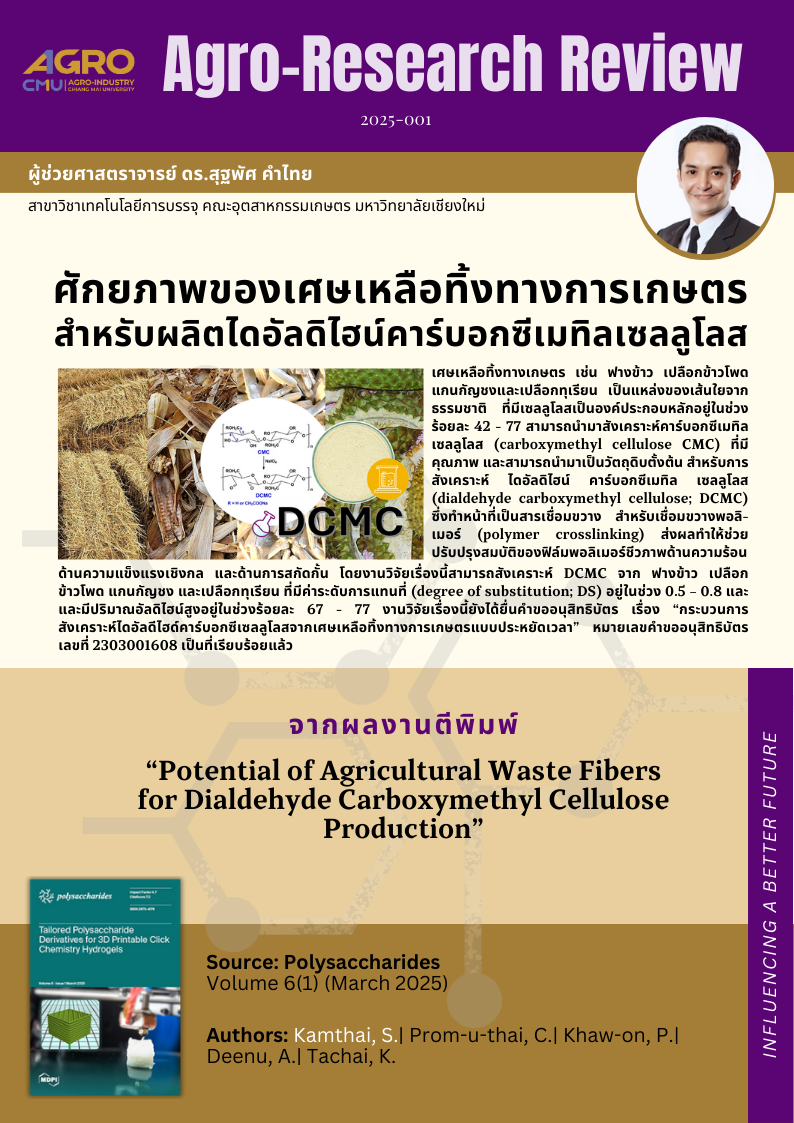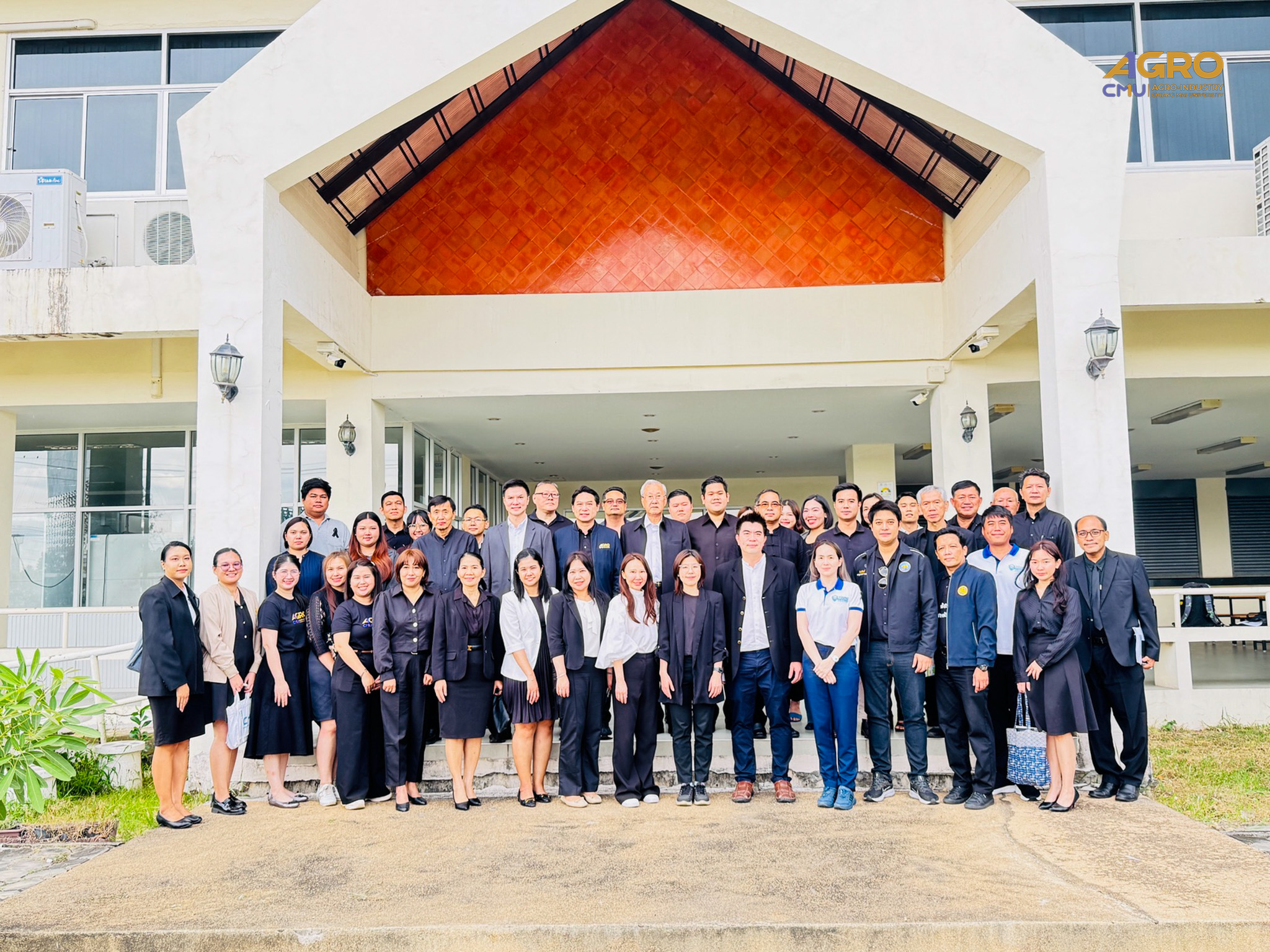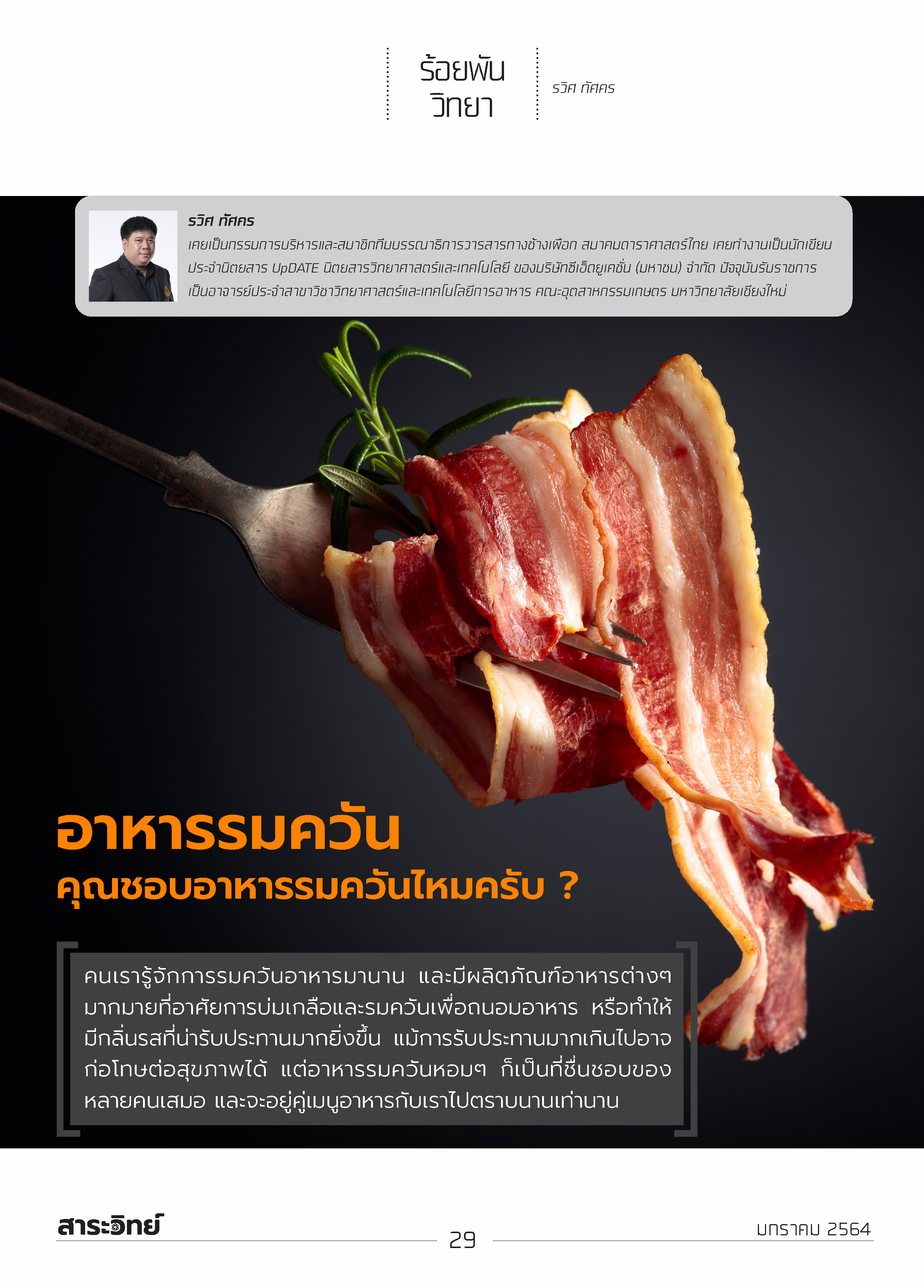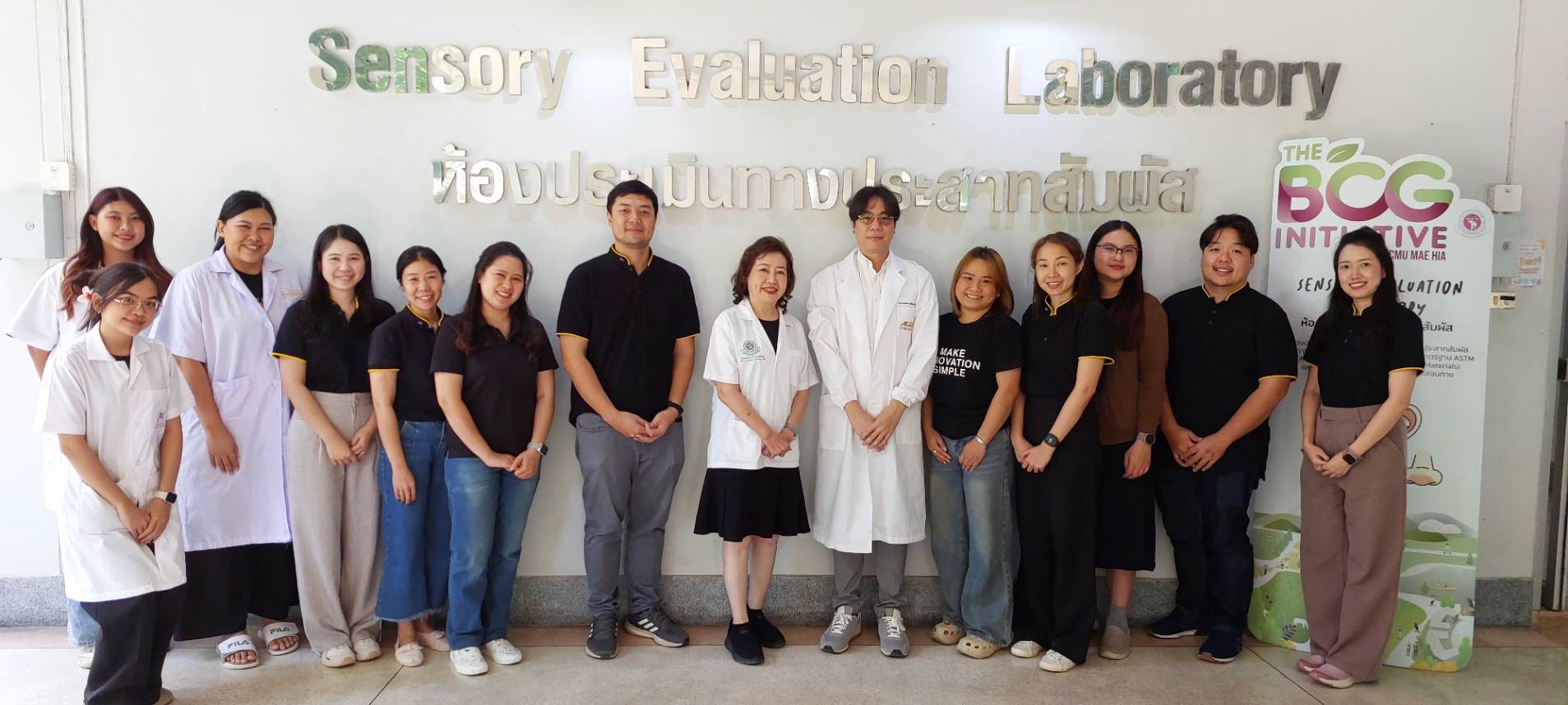
แนะนำงานวิจัย 2025-001: ศักยภาพของเศษเหลือทิ้งทางการเกษตรสำหรับผลิตไดอัลดิไฮน์คาร์บอกซีเมทิลเซลลูโลส
เศษเหลือทิ้งทางเกษตร เช่น ฟางข้าว เปลือกข้าวโพด แกนกัญชง และ เปลือกทุเรียน เป็นแหล่งของเส้นใยจากธรรมชาติที่มีเซลลูโลสเป็นองค์ประกอบหลักอยู่ในช่วงร้อยละ 42 -77 สามารถนำมาสังเคราะห์คาร์บอกซีเมทิลเซลลูโลส (carboxymethyl cellulose CMC) ที่มีคุณภาพสามารถนำมาเป็นวัตถุดิบตั้งต้นสำหรับสังเคราะห์ไดอัลดิไฮน์คาร์บอกซีเมทิลเซลลูโลส (dialdehyde carboxymethyl cellulose; DCMC) ซึ่งทำหน้าที่เป็นสารเชื่อมขวางสำหรับเชื่อมขวางพอลิเมอร์ (polymer crosslinking) ส่งผลทำให้ช่วยปรับปรุงสมบัติของฟิล์มพอลิเมอร์ชีวภาพด้านความร้อน ด้านความแข็งแรงเชิงกล และ ด้านการสกัดกั้น โดยงานวิจัยเรื่องนี้สามารถสังเคราะห์ DCMC จาก ฟางข้าว เปลือกข้าวโพด แกนกัญชง และ เปลือกทุเรียน ที่มีค่าระดับการแทนที่ (degree of substitution; DS) อยู่ในช่วง 0.5 – 0.8 และ และมีปริมาณอัลดิไฮน์สูงอยู่ในช่วงร้อยละ 67 - 77 งานวิจัยเรื่องนี้ได้ยื่นคำขออนุสิทธิบัตร เรื่อง กระบวนการสังเคราะห์ไดอัลดีไฮด์คาร์บอกซีเซลลูโลสจากเศษเหลือทิ้งทางการเกษตรแบบประหยัดเวลา หมายเลขคำขออนุสิทธิบัตรเลขที่ 2303001608 เป็นที่เรียบร้อยแล้ว
Agricultural wastes, i.e., rice straw, corn husk, hemp shives, and durian rind, are sources of natural fiber, which mainly consists of cellulose, resulting in the range of 42–77%. They can be used to synthesize carboxymethylcellulose (CMC) as a starting material for dialdehyde carboxymethyl cellulose (DCMC) synthesis. It acts as a crosslinking agent for polymer crosslinking, resulting in improving the properties of biopolymer films in terms of thermal, mechanical, and barrier. This research can synthesize DCMC from rice straw, corn husk, hemp shives, and durian rind with a degree of substitution (DS) in the range of 0.5 - 0.8 and a high aldehyde content in the range of 67 – 77%. This research already has a petty patent application, no. 2303001608. (Synthesis and Characterization of Dialdehyde Carboxymethyl Cellulose (DCMC) from Agri Culture Waste)
Topic: Potential of Agricultural Waste Fibers for Dialdehyde Carboxymethyl Cellulose Production
Authors: Kamthai, S.| Prom-u-thai, C.| Khaw-on, P.| Deenu, A.| Tachai, K.
Abstract:
This study investigates the environmental issue of air pollution (PM 2.5) from agricultural waste in Thailand and promotes the utilization of agricultural wastes by using their chemical compositions, especially cellulose content. The fourth readily available varieties of agricultural waste, such as rice straw, corn husk, hemp shive, and durian rind, were selected to evaluate their fiber morphology and chemical properties. Subsequently, dialdehyde carboxymethyl cellulose (DCMC) was produced from four kinds of agricultural wastes under synthesis conditions involving a pH value of 3.0, a reaction temperature of 35 °C, a mass ratio of NaIO4 and carboxymethyl cellulose (CMC) of 1:3, and a reaction time of 4 h. The formation of aldehyde substitution was confirmed by the degree of oxidation (DO) and aldehyde content. To characterize the DCMC properties determined, Fourier-transform infrared (FTIR) spectroscopy, X-ray diffraction (XRD), gel permeation chromatography (GPC), and scanning electron microscopy (SEM) were used. The results revealed that rice straw, corn husk, hemp shives, and durian rinds presented high DO and aldehyde content; the aldehyde contents were more significant than 30% and 50%, respectively. The highest DO and aldehyde contents were 38.63 and 77.23%, respectively, for the hemp shives. The characterized data in recent research illustrated that the added value of agricultural wastes could be increased by DCMC production, which can be applied as a crosslinking reagent for future novel biopolymer film applications.
Keywords: agricultural wastes; aldehyde content; cellulose; crosslinking reagent; dialdehyde carboxymethyl cellulose (DCMC)
View at publisher: https://www.mdpi.com/2673-4176/6/1/12
#อกมช. #agrocmu #CMU





